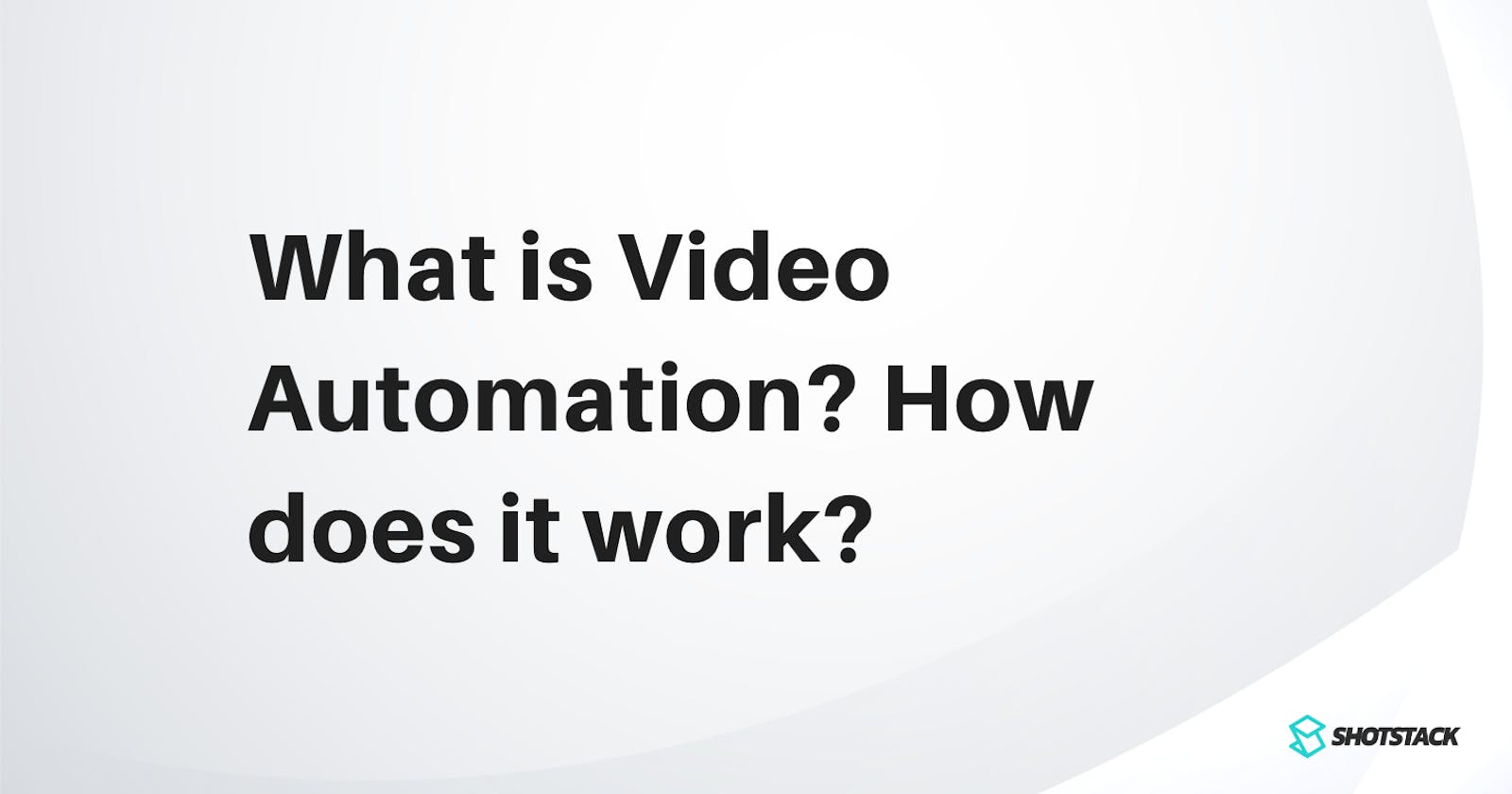A recent survey shows video marketing has the highest customer engagement compared to other forms of marketing. More than 82% of all internet traffic is videos and it is only growing. Companies are spending a significant amount on creating high-quality content.
But the way we create videos hasn't really changed. Most of the video editing process is still manual and slow. That's where video automation can significantly improve the process.
What is video automation?
Video automation is automatically editing and generating rendering videos with specific software or workflow.
Traditional video production methods can be costly and time-consuming. It requires an editor to spend hours editing and refining. That's where video automation is helpful. With a proper workflow, one can edit and generate thousands of high-quality videos in minutes.
Let's say you own a clothing brand and you find that using product videos for marketing improves revenue. So you decide to create short videos for all your products.
First, you need to create a design for your video. Maybe you want to show the price, product image, and other information, and add effects based on the story. Then you need to resize, crop, and tweak all of them to fit various marketing channels like social media, email, etc...
An average fashion brand sells more than 1,000 SKUs every month. That will take a long time and cost a lot of money to generate videos for every item.
That's when video automation can help you. A well-designed workflow can simultaneously edit and generate thousands of high-quality product videos for your brand.
Here is a simple video example that automatically generates birthday cards for your customers with discount codes. You can integrate it into your CRM and use it to improve customer loyalty:
Different ways to automate videos
The automation process can be unique to one's requirements and skills. It can be briefly divided into 3 different segments:
Code:
If you know how to code, then chances are you have already tried to automate editing videos. Libraries such as MoviePy for Python and FFmpeg allow you to programmatically edit videos. If you require a customizable, scalable, and powerful solution, developing your own video automation workflow is the way to go.
However, using these libraries on a single computer is not scalable and efficient. Editing videos is a resource-intensive process. It may take hours to edit and generate a single video using a standard computer. Setting up your own cloud server is not easy or cost-effective.
That's where solutions like Shotstack can help. Shotstack provides a cloud based video editing API and a robust hosting infrastructure. This allows you to simultaneously edit and render multiple videos in a powerful cloud infrastructure while not having to worry about setting up your own servers. You can use SDK for Python, Nodejs, Ruby, or PHP to develop your automation.
Low code:
Another method to automate videos is by using low-code tools. Leveraging integration tools like Zapier or Make for automation with products like Shotstack, Rocketium, etc.. to create a powerful automation workflow.
Creating a workflow may require a little bit of programming. The downside of this method is the limitation due to pre-built integration between the two applications.
No code:
The final method to automate videos is by using pre-built software. Adobe, Biteable, and similar UI-based tools that offer video editing. Not all tools have automation features but some tools allow limited automation by integrating another application like Zapier.
However, these types of software will have limited automation features as they are not designed for bulk automation. As it requires an automated process to replace data, the integration methods can be limited.
Using a video editing API like Shotstack with code/low-code methods seems to be the most efficient and sustainable approach to automating video generation. The result is a powerful process that allows full control over the entire workflow, including integrations and destinations with most external software. This way, you are not stuck with features of one particular tool and can scale without a problem.
Is video automation right for you?
Although the video automation process is more efficient than traditional video editing processes, it still needs to progress to be a full-service solution. After all, videos are a form of creative expression.
Hence differentiating your requirements and planning ahead can help you understand if video automation is the right solution for you. The following questions can help you decide:
- What type of video is it? Illustrated, animated, story-based, etc
- Do the videos have repetitive design patterns? Example: Real estate videos, automotive listing videos, sports highlights, etc.. have repetitive patterns which make them easy to automate
- How long are the videos?
- How many similar videos do you need to produce?
- Where is the video going to be used?
- Is precision important? Video attributes like color correction, effects, etc
The future of video automation
As we move into the age of automation with evolving technologies like AI and Robotic Process Automation it is fair to say automation will largely impact the future of media generation. That said, we will still need professional video producers, designers, and editors for originality and creativity.
For high-volume, short, similar videos used in marketing, video automation can be an ideal companion. Industries such as real estate, travel, automotive, sports, media, news, etc… that continuously need to produce content can significantly improve their workflow through video automation.

